|
Artifact

The thesis intents to make use of design and economic intelligence to come out with the solutions on how 70,000 RMB can improve the housing condition in rural village in Jiangxi, China. The design could be a prototype which can be adapted to different villages. Closed to the fast-developing province Guangdong and Zhejiang, Jiangxi has been dedicating a large amount of labor force to the other province. The hollowing of traditional villages are facing problems not only including lacking of infrastructure but also the basic need, having a comfortable shelter. Traditional houses are mostly abandoned due to changing of life-style and out of repair for years. On the other hand, concrete blocks, representing the modern life in villagers’ mind, are built without any thermal treatment, contrary to the traditional construction wisdom. Based on the above problems, the thesis will mainly focus on how to improve the life of the villagers in certain budget and rethink about the traditional construction and tectonic technique.
How
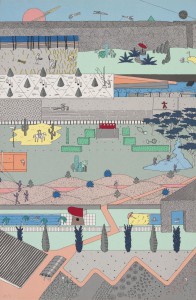 1.Oblique map, The Pleasure of Architecture, by Alex Wall, OMA 1.Oblique map, The Pleasure of Architecture, by Alex Wall, OMA
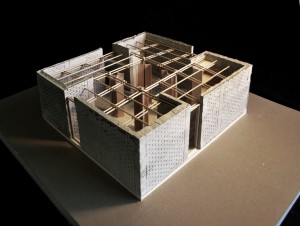 2.1k House, MIT, Ying Chee Chu 2.1k House, MIT, Ying Chee Chu
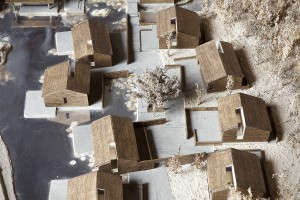 3.六鄉山居 Liu Xiang Shan Ju, by Natural Build 3.六鄉山居 Liu Xiang Shan Ju, by Natural Build
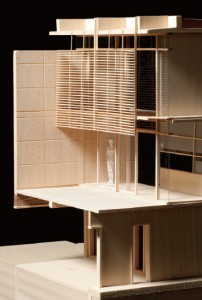 4.House in the City, by Enrique Norten 4.House in the City, by Enrique Norten
The thesis will be designed firstly through mapping of different basic information of the village, then through making different prototypes testing construction technique and finally using structure idea and economic data to prove the final design.
Step 01: Oblique mapping
Background research including physical and social issue of the site. Using oblique map as an mapping technique to map the background information, which is also possible to show the verticality of the site. (due Dec.17)
Step 02: Mapping in plan to isometric
Site visit (Dec 26- Dec 31) Site visit by understanding traditional construction and technique, mapping the material source as well as the cost spent on each sector. Interview with local people, understanding their economic situation as well as basic requirements. Concluding all the information into one map.
Revisit the site (Jan 12- Jan 16)Site revisit in order to research about the potential material and understand how tomake use of local material in terms of making a building. Mapping in isometric to show the tectonic technique. (due Feb. 3rd)
Step 03: Making test cases
Using models to show the design, especially showing the whole process of construction from collecting the local material, to the final cost of home for the villagers. The model could designed as a prototype for the modernization of the village building adapting to different families’ needs. (due May 3rd)
Step 04: Boarder scale thinking and revisions.
The final parts will zoom out into the scale of a village. With consideration of the infrastructure, future development of the site, the final process will including isometric mapping as well as making larger scale models showing the scenario of modern life of the village. (due Jan. 6th)
Theory:
- Frampton, Kenneth, and John Cava. Studies in Tectonic Culture: The Poetics of Construction in Nineteenth and Twentieth Century Architecture. Cambridge, Mass.: MIT, 1995. Print.
- Davidovici, Irina. Forms of Practice, German- Swiss Architecture 1980-2000. Switzerland: Gta Verlag, 2012. Print.
- Anderson, Benedict R. O. Imagined Communities: Reflections on the Origin and Spread of Nationalism. Rev. and Extended ed. London: Verso, 1991. Print.
Techniques:
- Liang, Ssu-ch’eng, year 12, A pictorial history of Chinese architecture : a study of the development of its structural system and the evolution of its types, ed. by Wilma Fairbank, Cambridge (Mass.): MIT Press.
- Deplazes, Andrea. Constructing Architecture: Materials, Processes, Structures, a Handbook. Basel: Birkhäuser, 2005. Print.
Seminal/ Current related projects:
1.1k House, MIT joint-research initiative by Yung Ho Chung
2.Basha Western Sunshine Kindergarten, 2014, By Prof. Zhu Jingxiang
3.六鄉山居 Liu Xiang Shan Ju, Zhuhai, Guangdong, China. by Natural Build.
What
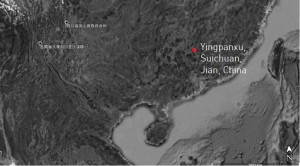
1 Google Map of Site Location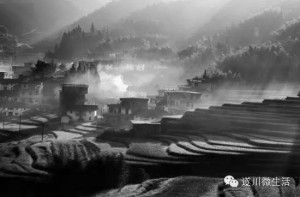
2 Scenery of Yingpanxu
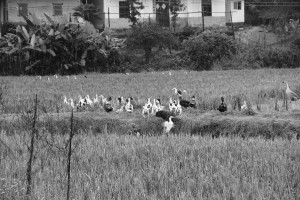 3 Life in the village 3 Life in the village
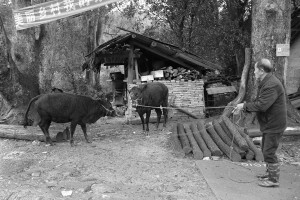
4 Simple Shed Built by Villagers
The site is in Ji’an County, Jiangxi Province, China. Closed to the fast-developing province Guangdong and Zhejiang, Jiangxi has been dedicating a large amount of labor force to the other province. The village, Yingpanxu, is one of the poorest villages in Ji’an County. The living condition and the infrastructure is far from satisfactory.
The charity organization IF China, based on Ji’an County, is launching a project called “70k Home”, supported by the Habitat for Humanities, which is building a proper home for each family by limited budget 70k yuan. The site Yingpanxu, is chosen as one of the test ground. The site is a mountainous area with abundant natural resources but limited arable land. The thesis is hoping to design a prototype which fits the budgets and needs of the villagers. Then, it could be act as a prototype for the other villages. Also, the thesis will explore how each prototype will dedicate to the development of rural area.
Why
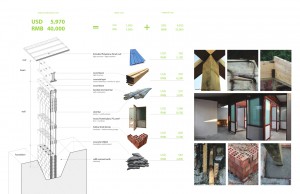 . 1k House, MIT, Ying Chee Chu . 1k House, MIT, Ying Chee Chu
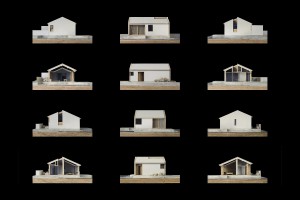 . Liu Xiang Shan Ju, Zhuhai, Guangdong, China. by Natural Build . Liu Xiang Shan Ju, Zhuhai, Guangdong, China. by Natural Build
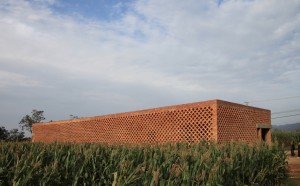 . A House For All Seasons, By John Lin . A House For All Seasons, By John Lin
The thesis will harness economic intelligence in designing budget house for remote villagers using local material. The design will show a certain degree of vernacular aspects and prospects of modernization of remote rural area.
Traditional wisdom has shown how to make use of local material to create comfortable space reacting to different climate. Since the proposed of primitive hut by Vitruvius, it was thought to be a standard form of architecture. It shows the basic elements of a shelter. Architecture without architects by Bernard Rudofsky shows the beauty of primitive architecture, which is different types of vernacular building adapting to different modes of life.
Nowadays there’s a large amount of cases dedicated to rural area for housing problems such as paper log house by Shigeru Ban, pre-fabric steel house by Hsieh Ying-chun. All of them are dedicated to rural or disaster-strike area where is in need for housing. All the houses is standardized, built by pre-fabric material for sudden needs.
However, the thesis is based on the background of modernization of rural village and the charity program of “70K house”. Although pre-fabric housing is built in a low budget, they are not using local material and may not fit for the needs of different families. The thesis will have an innovate solutions to the budget housing prototype for villagers and transforming the traditional construction and tectonic techniques.
|